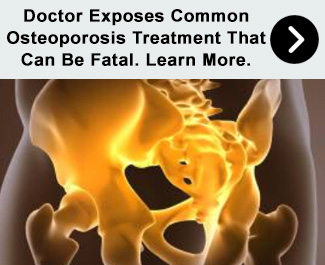7. Calcitonin
LEARN MORE NOW
Osteoporosis? How To Reverse Bone Loss & Increase Bone Density. SEE IT
Bone Health Discovery Can Be Fatal If Ignored. SEE IT
Doctor Cracks The "Bone Code" For Preventing And Treating Osteoporosis. SEE IT
If You Have Osteoporosis, Do This Immediately. SEE IT
Doctor Exposes Deadly Common Osteoporosis Treatments. SEE IT
Studies have demonstrated that Calcitonin, a nasal spray taken once a day, can reduce spinal fractures by 25 percent. It is considered to be one of the most well-tolerated medications used to treat osteoporosis. (4)
Calcitonin plays a vital role in regulating calcium levels in the body, and its administration to patients with osteoporosis helps to prevent bone loss by suppressing bone resorption and promoting bone growth.
6. Raloxifene
Raloxifene is a type of medication known as a selective estrogen receptor modulator (SERM) that can be used to treat osteoporosis.
It works by selectively targeting and binding to estrogen receptors in the body, which helps to stimulate bone formation and reduce bone resorption. This leads to an overall increase in bone density and a reduced risk of fractures.
5. Bisphosphonates
Bisphosphonates are a class of medications commonly used to treat osteoporosis. They work by slowing down bone resorption, which is the process by which old bone cells are broken down and removed from the body.
By slowing down bone resorption, bisphosphonates help to preserve bone density and reduce the risk of fractures in individuals with osteoporosis. Bisphosphonates are taken orally or intravenously.
4. Denosumab
Denosumab is a monoclonal antibody that targets the RANKL protein, which is involved in the formation of osteoclasts. By inhibiting the formation of osteoclasts, Denosumab helps reduce bone resorption and increase bone mineral density.
This can ultimately reduce the risk of fracture. As a fully human monoclonal antibody, it has been shown to be effective and well-tolerated in treating osteoporosis.
3. Parathyroid Hormone
Parathyroid hormone is a hormone that plays an important role in regulating calcium and bone metabolism in the body. When used to treat osteoporosis, parathyroid hormone is administered as a synthetic form of the hormone known as teriparatide.
Teriparatide is a type of medication that stimulates bone formation by increasing the activity of osteoblasts, which are cells responsible for building new bone tissue. This leads to an overall increase in bone density and a reduced risk of fractures.
2. Fall Prevention Measure
Fall prevention strategies are an important part of treating osteoporosis because fractures often occur as a result of falls. One critical fall prevention measure is to make modifications to the home environment. Decluttering the home to make it safe for the patient to move around can help reduce the risk of falls.
Wearing shoes that fit properly and have good traction can prevent the individual from slipping and falling. Another fall prevention measure is to have regular eye exams.
These are examples of fall prevention measures that help reduce the risk of fractures and improve overall outcomes for individuals with osteoporosis.
1. Surgery
Surgery may be recommended in certain cases to treat fractures or other complications of osteoporosis. Vertebroplasty or kyphoplasty is one of the common surgical procedures to treat osteoporosis. This procedure involves injecting bone cement into vertebrae that have collapsed or fractured due to osteoporosis. This particular surgical procedure can help stabilize the spine and relieve pain.
Spinal fusion is another type of surgery that can help treat damaged bones. It involves fusing two or more vertebrae together to provide stability to the spine. It may be recommended for individuals with severe spinal deformities or instability due to osteoporosis.
In cases where hip fractures occur due to osteoporosis, hip replacement surgery may be necessary to replace the damaged joint and improve mobility.
These are osteoporosis symptoms and treatments worth knowing about.
Osteoporosis? How To Reverse Bone Loss & Increase Bone Density. SEE IT
Bone Health Discovery Can Be Fatal If Ignored. SEE IT
Doctor Cracks The "Bone Code" For Preventing And Treating Osteoporosis. SEE IT
If You Have Osteoporosis, Do This Immediately. SEE IT
Doctor Exposes Deadly Common Osteoporosis Treatments. SEE IT


